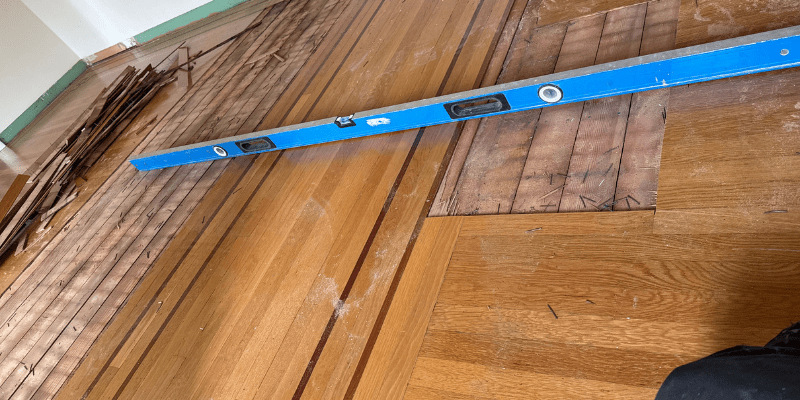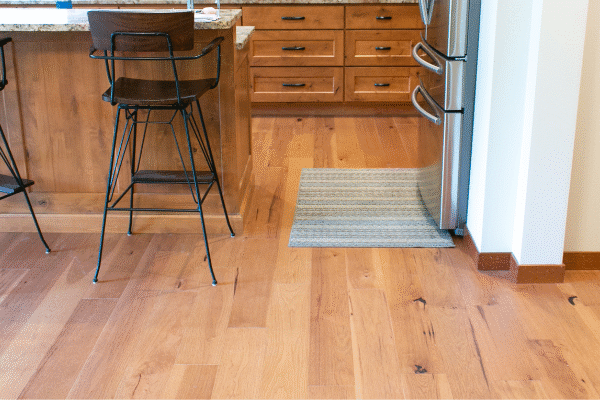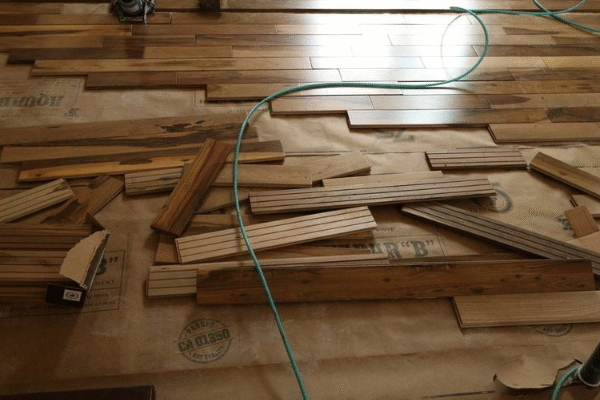That Can Wreck Your Floors—and How to Avoid Them
When Good Floors Go Bad: A Reality Check from the Field
At LUKS Construction, we’ve seen it all—beautiful hardwood floors prematurely ruined, buckling laminate in nearly new homes, luxury vinyl planks peeling at the edges, and creaky, squeaky messes where premium materials were meant to shine. The culprit? Nearly always poor installation practices.
If you’re a homeowner in Seattle, Bellevue, Kirkland, Redmond, or anywhere in King and Snohomish County, WA, this blog is for you. Whether you’re planning a new flooring project or wondering why your floors aren’t performing as expected, understanding these common mistakes can save you thousands of dollars—and a whole lot of frustration.
1. Floating Floors on Uneven Subfloors: The Bouncy Disaster
Floating floors—like laminate and luxury vinyl plank (LVP)—are popular for their affordability and quick installation. But there’s a crucial detail many DIYers and even inexperienced contractors skip: subfloor preparation.
We often find floating floors installed directly over subfloors that are uneven, unlevel, or damaged. These imperfections might seem minor at first, but they quickly cause serious issues like:
- Soft, bouncy spots underfoot
- Visible dips or humps in the floor
- Cracks between boards from excessive movement
- Long-term wear from friction and flexing
Why It Matters: Unlike nailed or glued-down floors, floating floors have no physical attachment to the subfloor. They rely entirely on a level surface for structural stability.
LUKS Pro Tip: Before any floating floor install, we inspect and level the subfloor using the right underlayment or self-leveling compound. This extra step ensures smooth, long-lasting results, especially in older Seattle and Bellevue homes.
2. No Expansion Gap? Say Hello to Humps and Buckling
Hardwood and laminate floors are living, breathing surfaces. They expand in humidity and contract in dry conditions. Installing them flush against the wall with no expansion gap is a recipe for disaster.
What we’ve seen:
- Flooring pushing against the walls during expansion
- Visible buckling in the middle of the room
- Gaps between boards caused by trapped pressure
- Baseboards or trim lifted off from the wall
Why Expansion Gaps Are Critical: An expansion gap (typically 1/4 to 1/2 inch) allows natural movement to occur without damaging the floor or walls.
LUKS Pro Tip: We always leave the proper expansion space and cover it with baseboard or quarter round to maintain a clean look.
3. Skipping the Vapor Barrier in Basements = Mold Disaster
Installing hardwood, engineered wood, or even LVP directly onto a concrete basement slab without a moisture or vapor barrier? That’s an open invitation to mold, mildew, and flooring rot.
In Seattle’s damp climate, we’ve seen countless basement floors fail due to:
- Mold growing under flooring
- Cupping and warping of hardwood or engineered wood
- Adhesive failure on glued-down products
- Allergies and indoor air quality concerns
Why Moisture Barriers Are Non-Negotiable: Concrete naturally emits moisture—even when it feels dry. Without a proper 6 mil plastic barrier or a product with integrated waterproofing, your floors are doomed from day one.
LUKS Pro Tip: Before basement installations, we always test the slab’s moisture level and use industry-approved underlayments and barriers.
4. Wide Plank Hardwood with Nails Only? A Noisy Nightmare
Wide plank hardwood floors (typically 5” and up) are stunning, but they require special installation techniques. We’ve seen projects where contractors used nails only to secure wide boards. The result?
- Squeaky, noisy floors from day one
- Excessive movement during seasonal changes
- Loose or shifting boards
- Cracks between planks
Why Nails Aren’t Enough: Wide boards expand and contract more dramatically than narrow ones. Without glue assist or full glue-down installation, nails alone can’t handle the tension.
LUKS Pro Tip: For all wide-plank hardwood floors, we use a combination of glue and nails or go full glue-down.
5. Non-Acclimated Wood = Gaps, Buckling, and Regret
Hardwood is a natural material that needs to acclimate to the room’s environment before installation. If your contractor skips this step, expect:
- Gaps between planks in the winter
- Buckling or cupping in the summer
- Boards pulling away from each other
- Finish cracking and premature aging
The Science Behind It: When wood enters a new home, it adjusts its moisture content to match the indoor climate. This process takes 5–10 days on average.
LUKS Pro Tip: We never rush the process. We acclimate all hardwood materials in the home before installation and test humidity and temperature to ensure optimal conditions.
6. Installing the Wrong LVP Over Heated Floors = Melted Dreams
Heated floors are a dream in Issaquah winters, but not all luxury vinyl plank (LVP) products are rated for radiant heat. Installing incompatible flooring can lead to:
- Discoloration
- Board curling or shrinkage
- Cracked or brittle finish
- VOC emissions from overheated adhesives
Why Compatibility Is Crucial: Each LVP manufacturer specifies temperature limits and compatible heating types.
LUKS Pro Tip: We only use LVP and adhesives that are certified for radiant heat systems and install them with careful control over temperature ramp-up.
Real-Life Transformations from LUKS Clients
- Seattle: A client had installed LVP over a bumpy subfloor themselves—and called us just two months later when the boards started separating. We removed the floor, leveled the subfloor properly, and reinstalled the product with new underlayment.
- Bellevue: In a Bellevue basement, a contractor installed engineered hardwood without a vapor barrier. We helped remediate the space, installed a vapor barrier and waterproof underlayment, and replaced the damaged boards.
- Redmond: A homeowner called about their brand-new wide-plank floor that squeaked. We discovered it had been nailed without adhesive. Our team refinished the subfloor, reinstalled the floor with glue assist, and the house is now blissfully quiet.
Top 5 Tips to Protect Your Flooring Investment
- Hire certified professionals like LUKS Construction
- Always level and test your subfloor
- Use radiant heat-compatible materials
- Acclimate your wood properly
- Use moisture barriers for concrete or basement installs
Call the Experts at LUKS Construction
In a region like the Pacific Northwest, where moisture, seasonal shifts, and older homes present constant flooring challenges, you need more than a basic installer. You need a contractor who understands both the science and the art of hardwood floor installation.
At LUKS Construction, we combine old-school craftsmanship with modern best practices to deliver flawless, long-lasting floors. From Bellevue to Snohomish, we know what it takes to prevent the most common flooring failures—and we’re here to make sure your home never becomes a case study in “what went wrong.”
📞 Call us today at 425-971-2895
🌐 Visit www.luksconstruction.com





